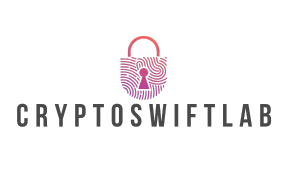Table of Contents
ToggleIn a world where data breaches seem to pop up faster than a cat video on the internet, understanding data protection is more crucial than ever. It’s like locking your front door but forgetting to close the window—one little oversight can lead to a big mess. With personal and sensitive information at stake, it’s time to get serious about safeguarding what’s yours.
Data protection isn’t just a buzzword; it’s a necessity. Imagine your private info spilling out like a poorly sealed bag of chips—nobody wants that! Whether you’re a small business owner or an everyday internet user, knowing how to keep your data safe can save you from a headache (and a hefty fine). So grab your virtual toolkit and let’s dive into the essentials of data protection that’ll keep hackers at bay and your peace of mind intact.
Overview of Data Protection
Data protection encompasses measures and processes designed to safeguard personal and sensitive information from unauthorized access and breaches. Understanding data protection principles helps individuals and organizations maintain confidentiality, integrity, and availability of data.
Legal regulations, including the General Data Protection Regulation (GDPR) and the California Consumer Privacy Act (CCPA), play a crucial role in shaping data protection practices. These laws require organizations to implement stringent controls and ensure proper handling of data.
The scope of data protection extends to various sectors. For instance, healthcare institutions must protect patient records. Similarly, financial services must ensure that customer data remains secure. Adopting best practices, such as encryption and regular security audits, strengthens data protection efforts across all industries.
Risks associated with inadequate data protection can be severe. A data breach not only leads to financial loss but also damages reputation and erodes trust. Organizations may face legal penalties and customers may lose faith in a company’s ability to safeguard their information.
Human behavior significantly influences data protection outcomes. Employees often create vulnerabilities through negligence or lack of training. Implementing ongoing education about security policies helps mitigate these risks and promotes a culture of data protection.
Investing in advanced technology solutions also enhances data protection. Tools like firewalls, intrusion detection systems, and data loss prevention software offer critical layers of security. Utilizing these technologies empowers organizations to proactively manage and secure sensitive data.
A solid understanding of data protection ensures individuals and organizations can navigate evolving threats effectively. Prioritizing data protection remains essential to maintain trust and compliance in today’s digital landscape.
Importance of Data Protection

Data protection serves as a cornerstone for maintaining privacy and security in today’s digital landscape. Its significance extends beyond mere compliance; it impacts personal trust and organizational reputation.
Legal Compliance
Compliance with legal regulations is paramount for businesses. Adhering to standards such as GDPR and CCPA ensures protection of personal information. These regulations outline obligations businesses must meet to safeguard data. Violating these laws can lead to severe penalties, urging organizations to prioritize data protection. Meeting these legal requirements boosts consumer trust, creating a more secure environment for handling sensitive information. Companies that invest in data protection solutions demonstrate a commitment to privacy, helping them maintain compliance and protect their clients effectively.
Risk Mitigation
Mitigating risks associated with data breaches is crucial for all organizations. A single breach can result in substantial financial losses, affecting bottom lines significantly. Highlighting the importance of proactive measures, organizations can prevent unauthorized access and data theft. Educating employees about security policies plays a vital role in reducing human error, which often leaves vulnerabilities. Additionally, implementing advanced technologies such as encryption and data loss prevention solutions further fortifies defenses. By focusing on risk mitigation, organizations ensure they are prepared for potential threats, safeguarding their critical information and maintaining reputation.
Key Principles of Data Protection
Data protection relies on several key principles that safeguard personal information from unauthorized access. Understanding these principles is essential for effective data management.
Data Minimization
Data minimization emphasizes collecting only necessary information. Organizations limit data retention to that which is directly relevant to their operations. For example, a business might only ask for essential details when customers register for services. By minimizing data collection, organizations reduce exposure to potential breaches and liabilities. This principle not only enhances security but also fosters consumer trust and confidence in how their data is handled.
Purpose Limitation
Purpose limitation dictates that data should only be used for specified, legitimate purposes. Data collected for one reason cannot be repurposed without consent from individuals. For instance, a healthcare provider collects patient information solely for treatment and doesn’t share it for marketing without authorization. This principle ensures organizations remain accountable for the data they handle. Adhering to purpose limitation reinforces compliance with regulations like the GDPR, thereby reducing legal risks and enhancing consumer confidence.
Data Protection Strategies
Implementing effective data protection strategies is crucial for minimizing breaches. Organizations must consider various methods to safeguard sensitive information.
Encryption Techniques
Encryption techniques encrypt data, making it unreadable to unauthorized users. Utilizing Advanced Encryption Standard (AES), for instance, secures sensitive files both at rest and in transit. Another effective method is using end-to-end encryption for communication channels, ensuring only intended recipients can access the information. A strong encryption key management process maintains security by regularly updating or rotating keys. Additionally, applying encryption in cloud storage protects files from unauthorized access. Focusing on encryption not only secures data but also enhances compliance with regulations protecting consumer information.
Secure Access Controls
Secure access controls restrict data access to authorized users only. Implementing role-based access control (RBAC) allows organizations to grant permissions based on specific job functions. Regularly reviewing access permissions ensures that outdated access points are eliminated, reducing potential vulnerabilities. Multi-factor authentication (MFA) adds an extra layer of security by requiring additional verification methods beyond passwords. Logging access attempts helps detect unauthorized activities, alerting organizations to potential breaches. Establishing secure access controls fundamentally strengthens data protection efforts, fostering a culture of accountability and trust.
Challenges in Data Protection
Data protection faces significant challenges, driven by the dynamic landscape of digital threats and user needs. Addressing these challenges is essential for effective data security.
Evolving Cyber Threats
Cyber threats constantly evolve, creating difficulties for organizations. Hackers employ sophisticated techniques, making traditional security measures insufficient. Phishing attacks, ransomware, and data breaches become more frequent and complex. The 2022 IBM Cost of a Data Breach Report states that the average total cost reached $4.35 million. Organizations must adapt their security practices to counter these emerging threats. Continuous threat monitoring and incident response readiness emerge as critical factors in protecting sensitive information. By staying informed about the latest cyber threats, businesses can strengthen their defenses.
Balancing Usability and Security
Balancing usability and security poses a significant challenge for organizations. Users often seek seamless access to applications and data, but security measures can complicate this ease of use. Implementing strong passwords, multi-factor authentication, and encryption enhances security but may frustrate users. According to a 2021 survey by the Ponemon Institute, 63% of organizations reported that user frustration with security measures leads to risky behaviors. Striking a balance requires organizations to prioritize user experience without compromising security. Incorporating user-friendly security solutions can facilitate this balance while protecting data integrity.
Data protection is no longer just a technical requirement; it’s a fundamental aspect of trust in the digital age. As threats evolve and regulations tighten, individuals and organizations must remain vigilant and proactive. By implementing effective strategies and fostering a culture of accountability, they can significantly mitigate risks associated with data breaches. Emphasizing principles like data minimization and purpose limitation not only ensures compliance but also enhances consumer confidence. In a world where data is a vital asset, prioritizing robust protection measures is essential for safeguarding sensitive information and maintaining reputational integrity.






